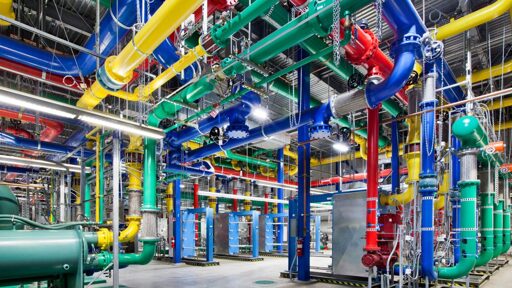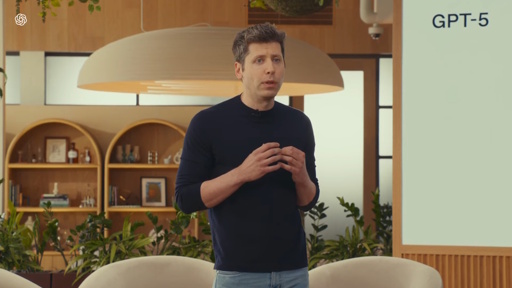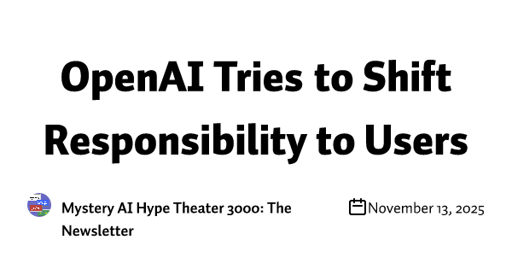☆ Yσɠƚԋσʂ ☆
- 2.76K Posts
- 1.58K Comments

 1·8 hours ago
1·8 hours agoYeah, sorry, I didn’t address the power plant point. These data center aren’t building gigawatts of power plant on site (except for the nukes). They’re building megawatts of power and their using existing gas generators and turbines and feeding the power directly into the data center. They’re not building traditional power plants to enhance the grid, they’re building off grid.
My point was that this is how long it takes to build a power plant in the US. This is what I keep saying here, the fact that they say they will build gigawatts of power plants doesn’t mean it’s actually possible. These are not realistic projections. These companies aren’t going to be magically building power plants faster than anybody else in the country.
I have it on good authority that in parts of Canada there is a massive surplus of electricity, as there is in a few regions in Scandinavia. They’re selling electricity at less then $0.05/KwH. This is mostly due to over building of hydropower in more remote areas. I’m not saying the whole grid is flush with power. I’m saying there are pockets of overproduction and the data centers are going to find ways of getting there.
There is a lot of hydro in Ontario, however it’s hard to call it a surplus since the whole grid has gone down several times under load already. Whenever there’s stress like a heat wave there’s power shortage. So, on the authority of somebody who has to live here and see what the grid looks like, I can tell you that it’s not going to support mass data center roll outs.
The existing data centers are powered.
The problems is that prices are already going up as a direct result of data centers eating up existing power supply. So, that’s negatively affecting the economy as a whole. Meanwhile, I simply don’t see how these off grid power stations can be built at a pace that’s needed to keep up with the projected demand.
I think there’s a real risk of the US gaining breathing room through use of military force from Mexico all the way South
If the US really starts attacking Latin America again, that’s absolutely going to unite everyone there against them. Attacking Venezuela or Mexico could turn out to be the very event that brings the empire down.
That’s solvable with government intervention.
I think you’re wildly overestimating the competence of the policy makers. This is certainly something that would’ve been solvable in the 30s or the 50s, but America today is a different beast. The US is basically at the child emperor stage of the Roman empire where you have an oligarchy that’s mostly focused on political intrigue as opposed to doing any actual governing.
We’re going to have reorganize the economy in the US to be a hermit kingdom that eats what it produces.
The problem is that the US doesn’t produce what it needs to be self sufficient. Nor are there workers specializing in the industries like science, engineering, and trades available because there’s no reason to go into these careers since there few jobs to be had there. Most people go into law, entertainment, service industry, and so on. That’s why tariffs have backfired so spectacularly, there are no domestic industries to protect. So all the tariffs do is just raise prices for everyone.
I don’t think lifting tariffs will reverse the trend either, but tariffs absolutely acted as an accelerant because they made the input costs go through the roof, and destroyed a whole bunch of companies in the process. It’s an ongoing economic shock on an economy that’s already in a bad way.
I’m trying to temper your predictions of imminent failure with the factors that will allow this shit show to continue far longer than you expect it to.
It’s certainly possible they’re going to be able to kick the can down the road longer. Even if a major crash happens in the next couple of years, things will most likely stabilize to a point where the system can keep chugging along. The US could end up starting to look like Brazil where you have the top 10-20% who live relatively well, and the rest of the population ends up in favelas. That’s a very likely scenario in my opinion.

 1·13 hours ago
1·13 hours agoI can tell you didn’t actually read my article. :) Here’s the reality of building power plants in the USA:
The Vogtle plant in Georgia, for example, just came online after 15 years of construction. It was supposed to cost $14 billion; the final price tag was over $30 billion for just 2.2 gigawatts. That works out to about $16 billion per gigawatt.
Both building data centers on the scale that’s being proposed and supplying them with power are frankly fantastical ideas that have no grounding in reality. It simply cannot be done.
You are right that the reason the US has to stay in the AI race is precisely because there is a chance that it might work. As long as China continues to develop this tech, the US has no choice but to try and keep up. However, that’s forcing the US into diverting a huge chunk of their economy away from productive and socially necessary purposes. It’s exactly the same situation USSR found itself in during the Cold War.
I live in Canada, I can tell you that Canada absolutely does not have spare capacity on this scale. Meanwhile, Canada is suffering from a lot of the same economic problems the US is.
And, you keep looping back to hydrogen and geothermal, but that’s decades away. This tech is not being deployed at any meaningful scale in the US. The demand for energy is already outpacing the supply now. The spare grid capacity is at mere 15% right now, and that’s needed for stuff like extreme weather events such as heat waves. Data centers are starting to eat into this spare capacity already. The Pentagon has already been gaming scenario of mass blackouts caused by the growing energy demand. That’s why the whole Stargate project is has now stalled.
We agree that it’ll likely take a couple of years for all this to come to a head, but I see no way a crash can be avoided at this point. And it’s always possible there the crash will be triggered by some other economic event that’s unrelated to the AI bubble. The job numbers in the US are looking terrible, businesses are shuttering, and the tariff war is putting pressure on the whole economy. While stock markets don’t care about the lives of the working class, we should not make the same mistake. At the end of the day people have to make ends meet. As Lenin put it, every society is three hot meals away from chaos.

 1·15 hours ago
1·15 hours agoThe National Council of Corporations doesn’t really change anything I said above. The elephant in the room is that this tech is not living up to the expectations, and none of these companies have a viable business model. I mean it’s possible that the whole AI industry will be nationalized I suppose, but I can’t really see that happening myself. Furthermore, even if it did happen that would also lead to a crash because the government would be diverting already strained resources towards propping up an industry that produces no actual value.
There is no way to innovate your way out of this. It’s not a problem you can solve by just throwing money at it. Any serious innovation and infrastructure development is going to be a decades long project. The bubble is going to pop long before that. Again, read my article that I linked earlier. I discuss the specifics of the logistics involved, and it’ obvious there’s nothing that can be done to massively increase grid capacity in a way that would be needed.
Not only is the US behind in factory automation, it’s behind in having actual factories, and the manufacturing has only continued to shrink since Trump took over. There aren’t factories available to employ people, they would have to be built. But building the factories requires investment and skilled labor that itself doesn’t exist. The US economy has been increasingly financialized, and that means you don’t just have a readily available pool of workers to go out and build factories. Even if you did, then you’re still looking at at least a decade of figuring out the supply chains and all the other logistics needed to build and operate them.
Just look at how the attempts to ramp up ammunition production for Ukraine have fared. The US was unable to meaningfully ramp up basic things like artillery shell production, and that’s with state level funding being freely available.
I do think a 2 year timeline is very much a reasonable bet. We will likely see first tremors early next year, and then things will just continue to get worse from there.
In terms of military, it’s pretty clear that Russia is beating the US in Ukraine, and China’s military industrial strength absolutely dwarfs anything Russia can put out. At this point, DPRK likely has a more competent military than the US.
So, the owning class might be scrambling to make things work, but just like with Ukraine, simply wishing for things really hard can’t change material reality.

 1·16 hours ago
1·16 hours agoYour dry powder argument relies on a misunderstanding of liquidity versus solvency because capital reserves mean nothing if the investors controlling them decide the party is over. The moment VCs stop looking at projected growth and start demanding to see actual earnings is the moment the easy money fueling this boom vanishes overnight. Microsoft might have the reserves to idle for decades but the thousands of startups built on top of their infrastructure do not. When the hype clears and the balance sheets show that these AI projects contribute a total lack of value to the economy the capital is not going to circulate for the sake of the public good. It is going to flee to safety.
Furthermore, the idea that Microsoft shareholders will just politely applaud while Satya Nadella incinerates their dividend payments on data centers that don’t generate profit is pure fantasy. You have to understand that institutional investors have zero loyalty to the mission of artificial intelligence. They are loyal to one thing which is the quarterly earnings report. The moment that cash burn starts threatening the stock price or the dividend, those massive capital reserves you mentioned effectively belong to nobody because the shareholders will initiate a capital strike.
Microsoft is a vehicle for wealth extraction, not some charity for scientific advancement. If the board decides to burn $50 billion a quarter on compute clusters with no clear path to monetization, the major funds like BlackRock and Vanguard are not going to wait for the long term payoff. They have a fiduciary duty to not lose money. They will dump the stock, the valuation will crash, and the board will be forced to kill those AI projects immediately to stop the bleeding. The reserves argument ignores that a company’s survival isn’t just about cash in the bank, it’s about stock valuation. If the stock tanks because investors flee, the company loses its ability to raise capital, hire talent, or acquire smaller companies. The liquidity dries up because the market cap creates a death spiral that makes spending that cash politically impossible for the CEO.
We are already seeing the early tremors of this. Look at how the market punishes these tech giants every time they announce a higher capex without a corresponding jump in immediate revenue. The smart money knows that this is a game of musical chairs. They are currently tolerating the spend because of the hype, but they are watching the exit doors like hawks. The second the narrative shifts from investment in the future to wasteful spending, that 2 trillion dollars in dry powder is going to be pulled out of the tech sector faster than you can blink, leaving the workers and the broader economy to hold the bag.
You also cannot paper over the logistical reality with Keynesian interventions or government shakedowns because we are hitting a hard physical ceiling with energy and chip fabrication that money simply cannot fix fast enough to satisfy quarterly reports. Even if the state tries to force capital deployment it will result in a market revolt because investors will not tolerate burning cash on half finished data centers that cannot be powered. Innovation in energy sources like hydrogen takes years to bring online while market panic takes minutes. Once a few big institutional players get spooked by the lack of ROI and start quietly exiting their positions it will trigger a panic that no amount of government posturing or available capital can stop.
A pivot back to cheap labor just because wages are down isn’t a solution either. The companies creating the bubble are living entirely on investor faith with no real path to profitability. When that faith breaks they do not switch to hiring humans they just go bankrupt. The collapse happens when the contradiction between massive valuations and zero actual earnings becomes unsustainable.
Whether the crash will lead to organized militant labour or not ultimately depends on how many people end up getting pushed off the cliff this time around. After 2008 crash, millions of people lost everything, but there was still a critical mass of people who were able to put their lives back together and that allowed the economy to return to a sense of normalcy. However, this time around people are on far thinner margins, and it might not be possible to patch things up going forward. I suspect we’ll see how this all plays out sooner than later.

 1·22 hours ago
1·22 hours agoI agree there will be a significant social aspect to the bubble popping, but logistics issues are absolutely play a big role here as well. Just looks at the energy production picture in the US, and the fact that rare earths are already running low because China is increasingly using them domestically meaning there’s not enough left to export. These two factors alone mean that it’s physically impossible to actually construct and operate of all the new data centers the US is planning. All these data center investments are basically fiction.
Meanwhile, even the profits themselves are fictitious because it’s just seven companies writing IOU notes to each other. That’s literally the whole AI market right now. The hype is absolutely insane at the moment with companies burning through billions without any clear path to profitability, and we’ve got startups raising $2 billion seed rounds without even explaining what they’re building. That’s peak dotCom madness right there.
What’s different this time around though is the scale of this thing. We’re talking about $400 billion in AI infrastructure spending this year alone, which is like funding a new Apollo program every 10 months. But the revenue is basically pocket change compared to the spending.
The reality check is already happening though. GPT-5 was a massive disappointment, 95% of corporate AI projects are failing to deliver returns, and nobody has shown a clear path to actual sustained revenue. Meanwhile the big tech companies are using various accounting tricks to hide how much they’re actually spending on this stuff.
And a huge chunk of the US economy is now tied to this AI spending. Investments in data centers that will never be built are literally driving GDP growth, which means when this thing pops, it’s going to hurt way beyond just Silicon Valley. The whole house of cards is propped up by this idea that AI will at some point pay for itself, but the math just doesn’t add up. These companies need to generate something like $2 trillion in AI revenue by 2030 to even break even on all this capex, and right now, they’re nowhere close. OpenAI alone is burning through cash like it’s going out of style, raising billions every few months while losing money hand over fist.
I expect that once it’s finally acknowledged that the US is in a recession, that’s finally going to sober people up and make investors more cautious. The VCs who were happily writing checks based on vibes and potential will start demanding to see actual earnings, and that easy money environment that’s been fuelling this whole boom is going to vanish overnight.
If a few big institutional investors get spooked and start quietly exiting their positions, it could trigger a full blown market panic. At that point, we’ll see a classic death spiral. The companies that have been living on investor faith, with no real path to profitability, are going to run out of cash and hit the wall leading to an extinction level event in the AI ecosystem.
When that all actually starts happening ultimately depends on how long big investors are willing to keep pouring billions into these companies without seeing any return. I can see at least another year before reality starts setting in, and people realize that they’re never getting their money back.

 7·2 days ago
7·2 days agoHow long do you think this bubble can last realistically? I give it another year tops given that we’re already seeing bubble discussion entering mainstream media. That’s a clear sign that we’ve now reached the peak, and that investors are starting to get cold feet. Given that the whole thing runs on free money, investors losing confidence is going to mean the whole house of cards will start coming down.

 5·3 days ago
5·3 days agoThis is just the proposal that the US is floating. Russia hasn’t actually agreed to any of it.

 5·3 days ago
5·3 days agoThe overlap of people using Lemmy and grokipedia is probably zero, but we have to remember that we’re in our own bubble here. The reality is that there are tons of incels who worship Elon, and they probably outnumber all the western left combined.

 6·3 days ago
6·3 days agoNATO falling apart would be a very good thing.

 145·3 days ago
145·3 days agoIt’s truly inspiring to watch the political theater of Western imperialism, where the supposedly sovereign government in Kyiv has its peace terms drafted by Washington in consultation with Moscow, and delivered by the US Army Secretary, with an aggressive timeline for signature that would make any colonial administrator blush. The sidelining of the delusional Kellogg, who actually believed Ukraine could win, for an envoy who produced a plan that agrees with Russia’s territorial objectives, finally pulls back the curtain on the entire charade. The key victory for the US is in engineering a situation where the puppet must publicly express his constructive and honest gratitude for the privilege of surrendering. A textbook example of a proxy war, where the client state’s role is not to win, but to lose on a schedule and with the appropriate groveling gratitude to its masters.

 121·4 days ago
121·4 days agoThe US accounts for over 70% of actual military production in NATO, without the US it’s just going to be a hollow shell.
lemmy.ca is basically a white supremacy instance, get a load of the kinds of fash that frequent it https://lemmy.ml/u/Glide@lemmy.ca

 16·4 days ago
16·4 days agoNothing says “we’re the good guys” like diverting your entire explosives supply to bomb a besieged population, leaving your own arsenals empty.

 216·4 days ago
216·4 days agoThey already did back in 2014 when the US ran a violent coup to overthrow the legitimately elected government.

 6·5 days ago
6·5 days agoyeah it’s a frustrating trend, if archive site ever goes away news would be completely unaccessible

 5·5 days ago
5·5 days agowasn’t archived yet when I found it

 171·5 days ago
171·5 days agoExcept this time they’re not even really bothering with any credible pretense.














There’s literally nothing on the market that even remotely compares to M series chips right now in terms of performance and battery life. Macbooks are great machines in terms of hardware, and while macos has been enshittifying, it’s still a unix that works fine for dev work. So plenty of experienced devs use macs. You can also put Asahi Linux on them, which works fairly well at this point. The only thing that it can’t do is hibernate. Of course, app selection with it is more limited, but still works as a daily driver.